Exercises for Restless Legs Syndrome: 10 Ways to Find Relief
What are the best exercises for restless legs syndrome? How can exercise help relieve RLS symptoms? Get the facts and expert tips on exercises that can ease restless leg pain.
Understanding Restless Legs Syndrome (RLS)
Restless legs syndrome (RLS) is a common neurological condition that causes an irresistible urge to move the legs, often accompanied by uncomfortable sensations. Many people with RLS find the symptoms are worse when resting, such as sitting or lying down, and are partially relieved by movement or activity. The symptoms tend to be more severe at night, which can disrupt sleep and lead to daytime fatigue.
In many cases, RLS is associated with underlying vein disorders or imbalances in brain chemicals like dopamine. While the exact causes are not fully understood, research suggests exercise may help reduce RLS symptoms in some patients.
How Exercise Can Benefit Restless Legs Syndrome
Exercise can help alleviate RLS symptoms through several mechanisms. It triggers a complex biochemical process that increases blood flow to the leg muscles, releases feel-good endorphins that reduce stress and promote sleep, and increases dopamine levels, which can help relieve pain and discomfort. Studies show that those who engage in regular, consistent exercise tend to experience fewer and less severe RLS symptoms.
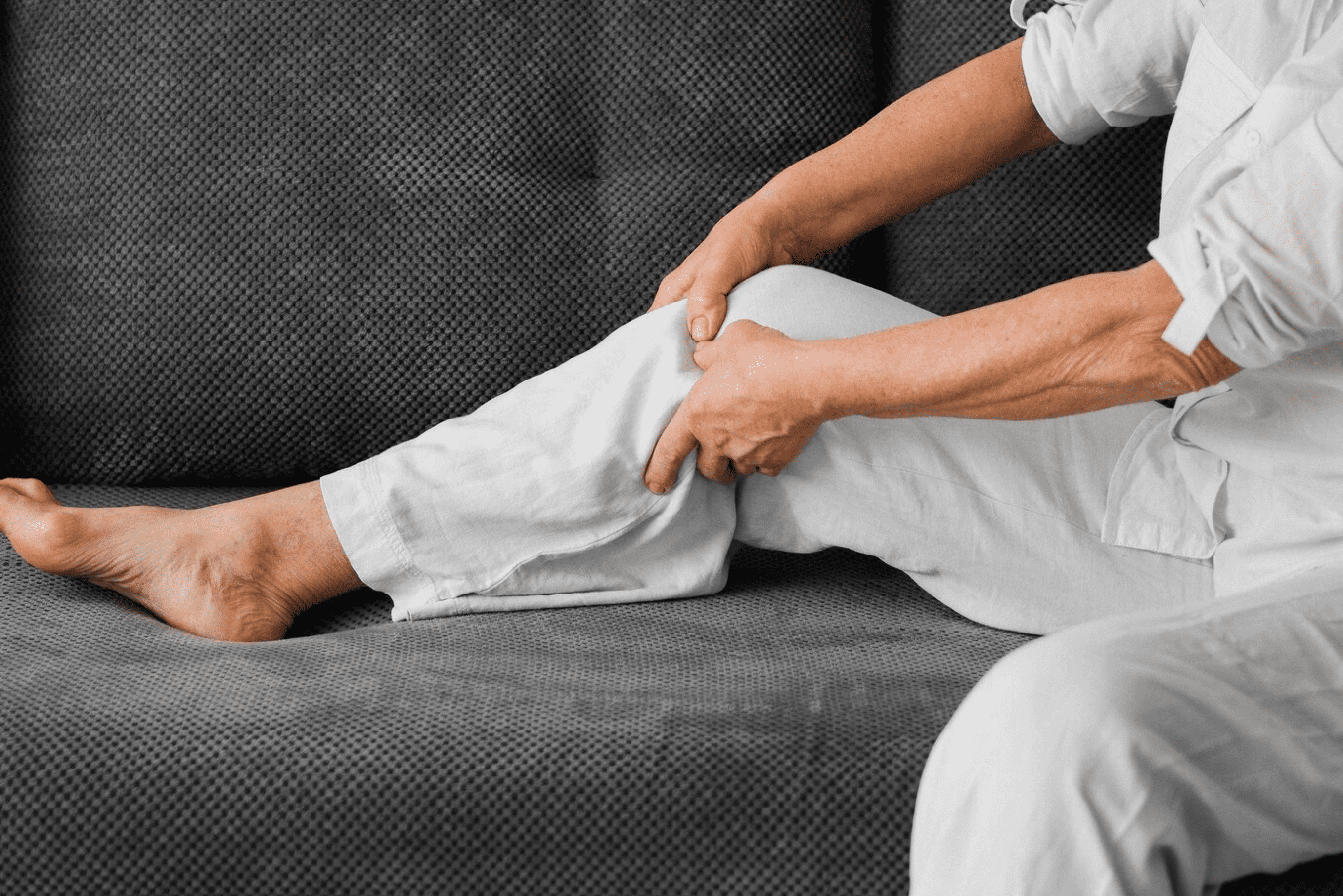
Stretching Exercises for Restless Legs
Stretching the leg muscles can increase blood flow and relieve tension, which may ease RLS symptoms. Here are some effective standing stretches to try:
Soleus Stretch
Take a small step back with one foot so the toes align with the opposite heel. Keeping both heels on the floor, sink straight down, bending the knees. Hold for 10 seconds before switching to the other leg. You’ll feel the stretch above the heel cord on the back leg.
Gastrocnemius Stretch
Take a large step back with one foot. Bend the forward knee and keep the back leg straight. Make sure the bent knee is directly over the ankle. Keep both feet pointed forward and lower the back heel down to the floor. Hold for 10 seconds before switching to the other leg. You’ll feel the stretch in the calf muscle of the back leg.
Quadricep Stretch
Lift one foot behind you and bend that knee. Grasp the raised foot behind you with the same side hand. Pull the foot up towards you, while keeping both knees as close together as possible. Do not pull too hard to avoid straining the knee. Hold for 30 seconds before switching to the other leg. You’ll feel the stretch in the front of your thigh of the lifted leg.

Yoga Poses for Restless Legs
Certain yoga poses can also help ease RLS symptoms by increasing blood circulation and lymph fluid movement, reducing nerve stimulation in the legs, and promoting relaxation. Try these beneficial yoga poses:
Legs Up the Wall Pose
Lie on your back with your legs extended up against the wall at a 90-degree angle. Stay in this position for 5 to 20 minutes to ease restless legs. This pose is especially helpful in the evening after a day of sitting or standing.
Standing Forward Fold
Start with your feet hip-width apart, then bend forward at the hips while keeping your knees soft and your spine lengthened. Hold the pose for 5 to 10 breaths, but don’t hold it longer than is comfortable.
Child’s Pose
Kneel down and sit on your heels, then fold your torso forward while keeping your arms at your sides. Rest your forehead on the floor, using a cushion for support if needed. Hold this pose for 5 to 20 minutes, breathing deeply.
Basic Relaxation Pose
Lie on your back with your arms outstretched by your sides. Place a cushion under your knees and head for support. Breathe gently and deeply, relaxing your body as much as possible. This pose helps calm the central nervous system and should be practiced for 10 to 20 minutes at the end of the day.

Seated Leg Circulation Exercises
These simple seated exercises engage the feet, ankles, and legs to increase circulation, which can help relieve RLS symptoms. Start with your feet flat on the floor and maintain good posture throughout.
Heel-Toe Rock
Alternate between lifting the heels, then the toes. Repeat this 5 times.
Heel Push
Pull both feet back slightly toward the base of the chair. Raise the heels of both feet so that only the balls of the feet are touching the floor. Hinge slightly forward at the hips to feel the stretch in the calves.
Experiment to Find the Right Exercises
When it comes to finding the most effective exercises for your RLS, a little experimentation may be necessary. Try different stretches, yoga poses, and leg exercises, and pay attention to how your body responds. Experiment with the frequency and timing of your workouts to see what provides the greatest relief. With some trial and error, you can discover the right formula to ease your restless legs syndrome symptoms.

13 Exercises for Restless Legs
Restless legs syndrome (RLS) is a common health condition that manifests as an irresistible urge to move the legs, usually accompanied by uncomfortable sensations. Many patients find the symptoms are worse when you’re resting, such as sitting or lying down. Also, many patients find the symptoms are partially or temporarily relieved by activity, such as walking or stretching. Most patients find the symptoms are worse at night.
In many cases, RLS is associated with common vein disorders. Exercise can help reduce symptoms in some patients.
Why is Exercise Beneficial for Restless Leg Syndrome?
Exercise can decrease the severity of restless leg syndrome in several ways. It triggers a complex biochemical process that increases blood flow to leg muscles, releases feel-good endorphins that reduce stress and promote sleep, and increases dopamine, which reduces pain. Studies show that those who engage in daily exercise and maintain a consistent level of activity have fewer symptoms associated with RLS.
There are many types of beneficial stretches and exercises for RLS. No matter which ones you decide to try, make sure to start slowly to avoid strain. Engaging in mild to moderate exercise every day is one of the best and least invasive ways to ease the pain of restless legs syndrome.
To discover the right formula to relieve your RLS symptoms, we suggest a little experimentation. Play around with how often and what time of day you do them.
Standing Stretches for Restless Legs
Stretching your legs increases blood flow, which in turn can help relieve restless legs. Stand behind a sturdy chair or next to a wall for support when needed. Start each exercise upright with your feet together. Lengthen the spine and maintain good posture throughout the exercises.
Soleus Stretch
Take a small step back with one foot so the toes align with the opposite heel. Keeping both heels on the floor, sink straight down, bending the knees. Hold for 10 seconds before switching to the other leg. You will feel the stretch above the heel cord on the back leg.
You will feel the stretch above the heel cord on the back leg.
Gastrocnemius Stretch
Take a large step back with one foot. Bend the forward knee and keep the back leg straight. To avoid strain, make sure the bent knee is directly over the ankle. Keep both feet pointed forward and lower the back heel down to the floor. Hold for 10 seconds before switching to the other leg. You will feel the stretch in the calf muscle of the back leg.
Quadricep Stretch
Lift one foot behind you and bend that knee. Grasp the raised foot behind you with the same side hand. Pull the foot up towards you, while keeping both knees as close together as possible. Do not pull your foot too hard to where it hurts your knee. Hold for 30 seconds before switching to the other leg. You will feel the stretch in the front of your thigh of your lifted leg.
Yoga for Restless Legs
Yoga poses reduce nerve stimulation in the legs by increasing blood circulation and lymph fluid movement.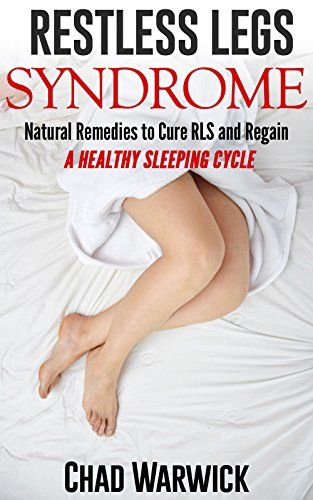 This can ease restless leg symptoms and help you sleep better, feel less stressed, and even lower blood pressure.
This can ease restless leg symptoms and help you sleep better, feel less stressed, and even lower blood pressure.
Legs Up the Wall Pose
Lie on your back with your legs extended up against the wall at a 90-degree angle. Stay in the position for 5 to 20 minutes to ease restless legs syndrome. This pose is especially beneficial in the evening after spending the day sitting or standing.
Standing Forward Fold
Start with your feet hip width apart, and bend forward at the hips while keeping knees soft and lengthening the spine as you fold forward. Hold the pose for five to 10 breathes; do not hold for longer than is comfortable.
Child’s Pose
Kneel down and sit on your heels, folding your torso forward while keeping your arms at your sides. Rest your forehead on the floor, using cushion as support if needed. Rest here for five to 20 minutes and breathe deeply.
Basic Relaxation Pose
Lie on your back with your arms outstretched by your sides.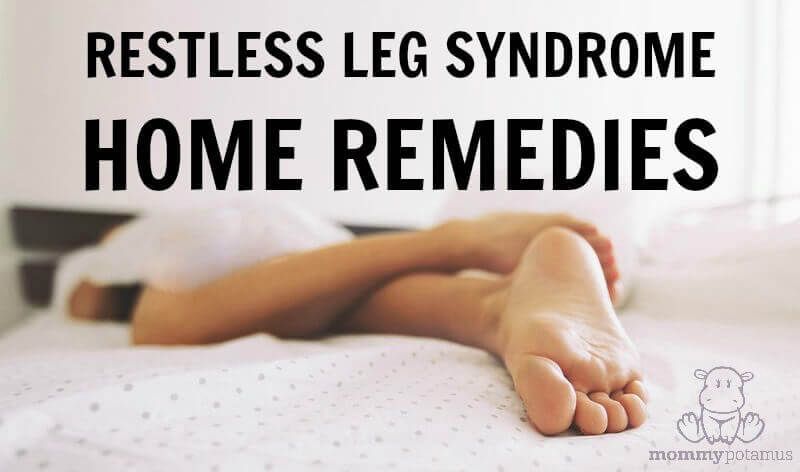 Place a cushion under your knees and under your head for support. Breathe gently and deeply, relaxing your body as much as possible. This pose helps calm the central nervous system and should be practiced for 10 to 20 minutes at the end of the day.
Place a cushion under your knees and under your head for support. Breathe gently and deeply, relaxing your body as much as possible. This pose helps calm the central nervous system and should be practiced for 10 to 20 minutes at the end of the day.
Seated Leg Circulation Exercises
These seated exercises engage the feet, ankles, and legs to increase circulation which is helpful in relieving restless leg syndrome. Increasing circulation helps move the blood through the veins and decreases prevalence of restless legs. Start these exercises with your feet flat on the floor and maintain good posture throughout.
Heel-Toe Rock
Alternate between lifting the heels, then the toes. Repeat 5 times.
Heel Push
Pull both feet back slightly toward the base of the chair. Raise the heels of both feet so that only the balls of the feet are touching the floor. Hinge slightly forward from the hips and place both hands on top of the right knee. Using the weight of your upper body, push the right knee down so the heel goes to the floor. Raise the heel back up and repeat 5 times before switching to the other leg.
Using the weight of your upper body, push the right knee down so the heel goes to the floor. Raise the heel back up and repeat 5 times before switching to the other leg.
Knee to Chest
Place hands under the thigh of one leg just above the knee. Gently lift the knee toward chest 5 times. Next lift the same knee and hold it there while you perform 5 ankle circles in each direction. Repeat with other leg.
Cardio Exercises for Restless Legs
While the above stretches can help lessen RLS symptoms, getting enough physical exercise is also an important part of finding relief. In fact, following a low-impact, moderate daily exercise program of at least 30 minutes a day can do wonders when it comes to alleviating RLS symptoms. Just be mindful not to overexert yourself, and follow all recommendations from your doctor.
Walking
Walking is one of the easiest and least expensive ways to get your blood pumping. Whether you prefer a stroll around your neighborhood, finding a new trail in the mountains, or utilizing a treadmill at the gym, there are options for everyone.
Biking
Like walking, biking also can be done indoors or outdoors. Be sure to follow all safety precautions and rules of the road. To cycle at a moderate pace, aim for 10 miles per hour or slightly slower.
Swimming
Swimming or doing water aerobics in a warm pool helps relax your muscles while building strength and improving mobility. Additionally, the low impact nature of swimming decreases joint stress.
Find Relief from Restless Leg Syndrome
Some patients benefit from vein treatments to reduce venous insufficiency to reduce their RLS symptoms. Along with proper exercise and stretching, minimally invasive treatments can also help with restless legs caused by venous insufficiency. To learn more, book a consultation on our website or by calling 1-800-VEIN-DOC.
Ready to Start your Vein Treatment Journey?
Request an appointment today to meet with leading vein experts at any of our clinics in:
NW Portland, Tigard, Happy Valley, Tanasbourne or Bend, Oregon.
Categories
All Categories
Ankle Discoloration
Compression Socks and Therapy
DVT
Events
Health
Inovia News
Pain and Swelling
Spider Veins
Varicose Veins
Varithena
Venaseal
Wounds and Ulcers
POPULAR POSTS
Newsletter Sign-Up
I AM A:
PATIENT
PROVIDER
Name
First
Last
Search for:
SEARCH POSTS
Exercises to Relieve Restless Leg Syndrome
How Exercises Help RLS Stretches for RLS RLS Exercises When to Stretch Managing RLS
Do you feel an irresistible urge to move your legs that causes you to wake up during the night? Restless leg syndrome (RLS) is a sleep disorder that creates these feelings and can cause significant sleep disturbances.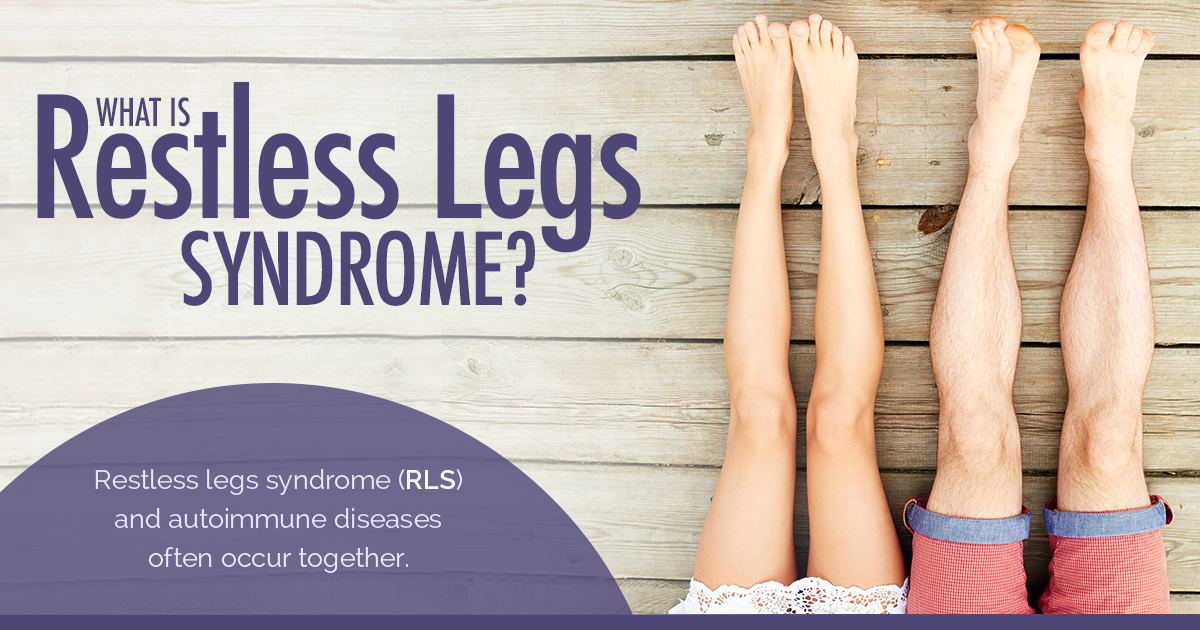 Typically caused by iron deficiency, low dopamine levels, or genetic factors RLS symptoms can be managed with exercise and stretches. Learn more about how you can implement exercises for restless leg syndrome into your daily routine.
Typically caused by iron deficiency, low dopamine levels, or genetic factors RLS symptoms can be managed with exercise and stretches. Learn more about how you can implement exercises for restless leg syndrome into your daily routine.
How Exercises Help Restless Leg Syndrome
Exercise for restless legs syndrome relaxes and tires out the muscles so you can get to sleep. Since restless leg syndrome is still in the early stages of medical research, treatment is aimed at reducing symptoms. Remember, an exercise program that works for one person might not work for another. You’ll need to try different techniques to find what works best for you. Exercise and stretching are treatment options that have minimal side effects and can benefit your whole body.
Try yoga for restless leg syndrome
Stretches for RLS
If you suffer from restless leg syndrome stretching loosens up muscles and produces an overall sense of relaxation. Check out these stretches and incorporate them into your exercise or bedtime routine to gain the most benefit.
Calf Stretch
A calf stretch loosens tight calf muscles and relaxes the lower legs. Start off by finding a stable surface to push against such as a chair or wall. Place both hands on the surface and move your right leg back. While keeping your left leg close to the surface, straighten your right knee as much as you can. You should feel the stretch in your calf. Ensure that your toes are facing forward and are not out to the side. Switch legs and repeat the same movement. Do not push through the pain.
Hold this stretch as long as you can, up to one minute.
Anterior Thigh Stretch
While standing on both feet hold onto a stable surface such as a wall.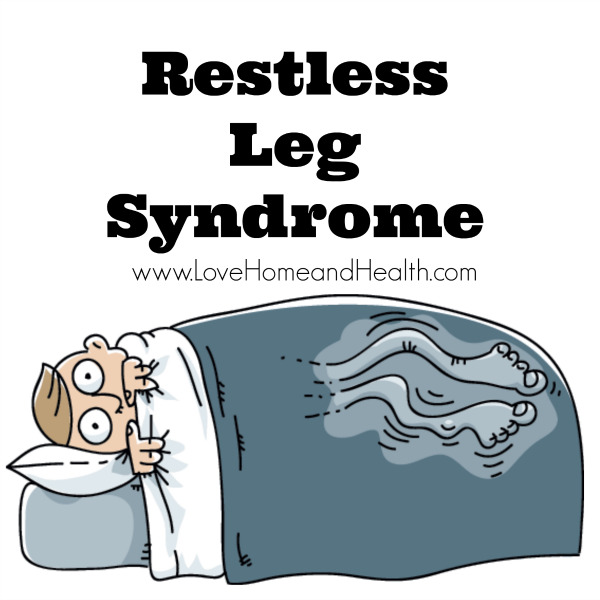 Grab your right ankle and bring your heel up to your bottom. Keep the top part of your right thigh in line with your left thigh. It should not be out forward, as that does not stretch the front thigh. Aim to have your knee pointing downward or slightly back. Repeat this movement on the left leg.
Grab your right ankle and bring your heel up to your bottom. Keep the top part of your right thigh in line with your left thigh. It should not be out forward, as that does not stretch the front thigh. Aim to have your knee pointing downward or slightly back. Repeat this movement on the left leg.
Hold the front thigh stretch for 30 seconds and repeat three times.
Hip Flexor Stretch
To start this stretch kneel on the ground. Bring the right foot forward with your foot flat on the ground and right knee at a 90 degree angle. Push your hips forward and tighten the muscles in your buttocks. You should feel a stretch in the right hip. Maintain a straight upper body with shoulders parallel to the ground. Switch sides and repeat the movement on the left leg.
Hold this stretch for 30 seconds.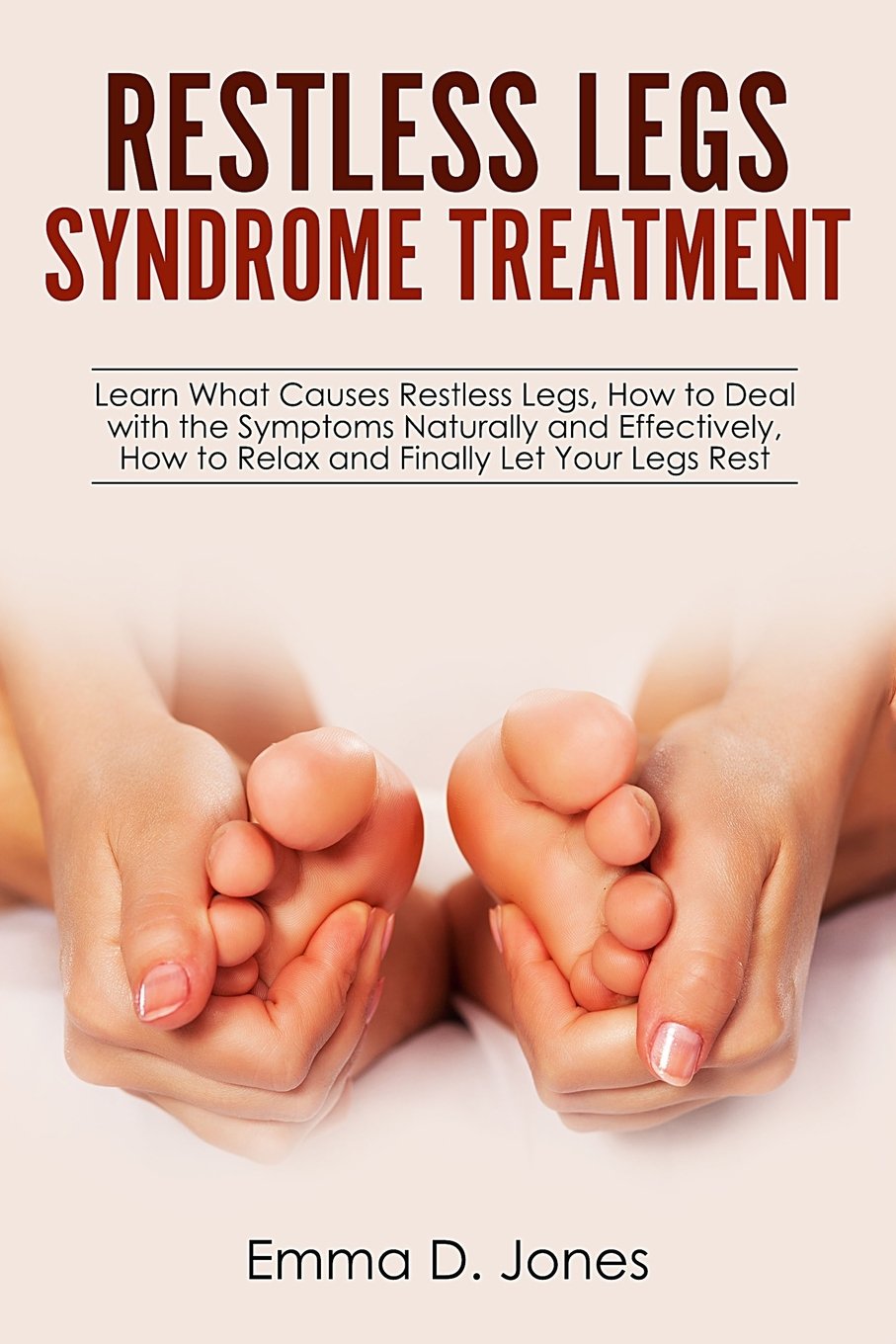
RLS Exercises
Moderate exercise when done on a regular basis can help relax muscles and lessen the symptoms of RLS. Aim for aerobic exercise or resistance training that trains the lower body. You will want to avoid intense workout routines and exercise before bedtime as it can worsen symptoms of restless legs syndrome. Ideally, you should exercise three times per week for 30 minutes to find the greatest benefit for restless legs syndrome. Try these exercises during the day to tire out your muscles so they don’t keep you up all night.
If you find your muscles are tense before exercise, Massage for Restless Leg Syndrome can be an effective solution.
Toe Raises
Lie down and relax flat on your back. Raise your toes straight up to the ceiling and then point down as far as you can.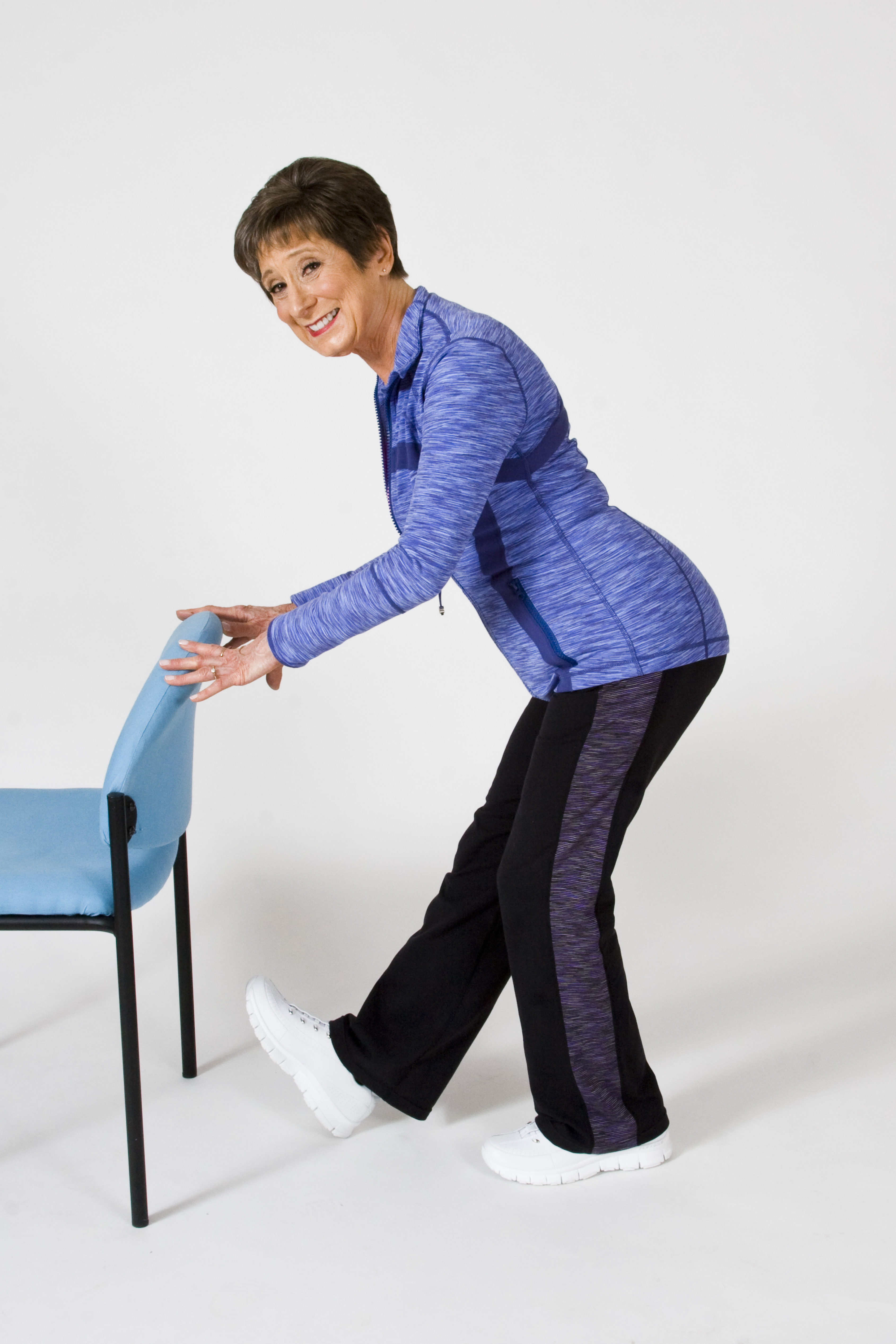 Continue to pump your feet up and down to work your calves and get them ready for bed.
Continue to pump your feet up and down to work your calves and get them ready for bed.
Perform this exercise ten to 15 times for two sets.
Bridges
Bridges work your glutes, hamstrings, loosen up the lower back. Lie down flat on your back. Bring both knees up and keep your feet flat on the ground. Slowly lift your buttock off the ground, raising it upward. Continue until you have a straight line from your knees to your shoulders. Pause at the top and then slowly lower your buttock to the ground.
Perform this exercise ten to twenty times.
Cycling or Swimming
Aerobic exercise calms RLS symptoms when done early in the day and at a moderate pace. Cycling is a low impact sport that will work your legs and get your heart rate up. If you have access to an indoor cycling facility then it can be done year-round.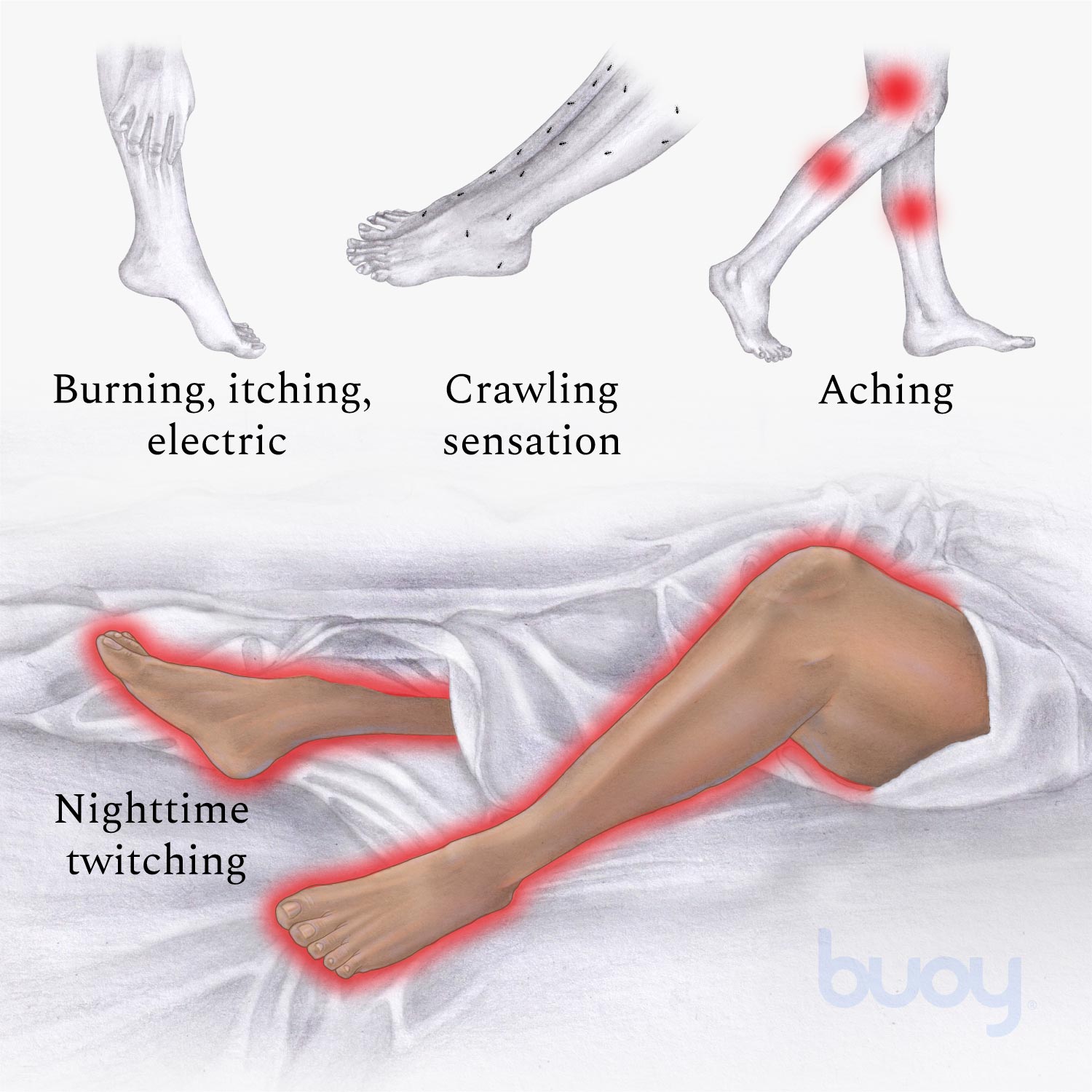 To prevent overstraining yourself, keep your speed at 10 miles per hour or below.
To prevent overstraining yourself, keep your speed at 10 miles per hour or below.
Swimming is also a great aerobic exercise that soothes muscles. The warm water will relax tense muscles and take the weight off of your legs helping to reduce restless leg syndrome pain. You should use a pool float to keep your legs off of the pool floor so you can stretch and move freely without the added impact. As with cycling, do not overdo it or your RLS symptoms can worsen. Swim laps with a friend or join a low impact water aerobics class to keep you motivated.
When and How Long to Stretch
Everyone is different in regards to when and how long they should stretch to reduce restless legs syndrome. Some people will need to stretch early in the morning, while others need to do it in the afternoon to loosen muscles before bed. Universally, everyone should avoid strenuous stretching and exercise before bed. This excites the muscle fibers and worsens RLS. Play around with timing and duration of stretching to find what works best for you. As you begin aim to stretch or exercise for 30 minutes per day working up to 60 minutes. If you find muscles are tense beforehand, massage is an effective way to loosen up muscles before stretching.
As you begin aim to stretch or exercise for 30 minutes per day working up to 60 minutes. If you find muscles are tense beforehand, massage is an effective way to loosen up muscles before stretching.
What to do for Restless Legs at Night
Managing RLS Symptoms Safely
Exercise is a safe and effective addition to the management of restless leg syndrome. When combined with medication, lifestyle changes, and other therapies, sufferers can find relief and finally get a full night of sleep without uncomfortable sensations in their legs. As with every medical condition and treatment be sure to talk to your doctor before you begin exercising. Restless legs syndrome doesn’t have to take over your night, try these exercises and finally get the rest you need.
Sources:
https://www.webmd.com/fitness-exercise/fitness-hip-flexor-stretches#1
https://www.ninds.nih.gov/Disorders/Patient-Caregiver-Education/Fact-Sheets/Restless-Legs-Syndrome-Fact-Sheet
https://www. mayoclinic.org/diseases-conditions/restless-legs-syndrome/diagnosis-treatment/drc-20377174
mayoclinic.org/diseases-conditions/restless-legs-syndrome/diagnosis-treatment/drc-20377174
https://www.everydayhealth.com/sleep-disorders/restless-leg-syndrome/10-ways-exercise-with-restless-legs-syndrome/
SHOP RESTLESS LEG SYNDROME PRODUCTS
Next Pages:
Yoga for Restless Leg Syndrome
Restless Legs Syndrome: Causes and Treatments
Content
- 1 Restless Legs Syndrome: Causes, Symptoms and Treatments
- 1.1 Restless Legs Syndrome: What is it?
- 1.2 Causes of Restless Legs Syndrome
- 1.3 Symptoms of Restless Legs Syndrome
- 1.4 Diagnosis of Restless Legs Syndrome
- 1.4.1 Anamnesis
- 1.4.2 General clinical examination 90 008
- 1.4.3 Additional diagnostic methods
- 1.5 How to treat Restless Leg Syndrome?
- 1.6 Medical treatment of restless legs syndrome
- 1.7 Physical therapy for restless legs syndrome
- 1.8 Alternative treatments for restless legs syndrome
- 1.
 9 How to prevent restless legs syndrome?
9 How to prevent restless legs syndrome? - 1.10 When should I see a doctor for restless leg syndrome?
- 1.10.1 1. If symptoms worsen:
- 1.10.2 2. If you have other illnesses:
- 1.10.3 3. If you are pregnant:
- 1.10.4 4. If you have complaints of pain in your legs:
- 1.11 Conclusions about restless leg syndrome
- 1.12 Related videos:
- 1.13 Question- Answer:
- 1.13.0.1 What is Restless Leg Syndrome?
- 1.13.0.2 What are the main causes of restless leg syndrome?
- 1.13.0.3 What are the treatments for restless leg syndrome?
- 1.13.0.4 What drugs are used to treat restless leg syndrome?
- 1.13.0.5 Can restless leg syndrome be treated without drugs?
- 1.13.0.6 Is restless legs syndrome hereditary?
Find out what Restless Leg Syndrome is, what causes it, and how it can be treated. Tips and advice from experts on relieving symptoms and improving the quality of life in this disease.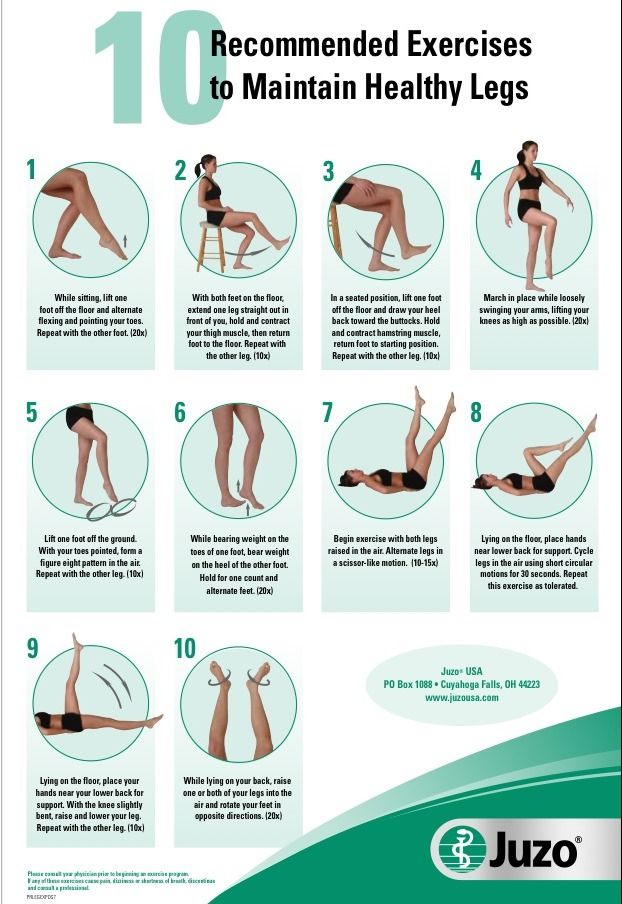
Restless legs syndrome is a neurological disorder that causes discomfort in the legs, especially at night. The sensations can be expressed in the form of burning, tingling, prickling, jumps, or simply a feeling of restlessness in the legs, which leads to the inability to calm down and fall asleep. This syndrome causes a lot of trouble and worsens the quality of life.
It is believed that this disease develops as a result of an imbalance of chemicals in the brain that are responsible for the proper function of the motor system. However, the exact causes and mechanisms of the disease are still not completely clear, making it difficult to choose an effective treatment.
There are several treatments for restless leg syndrome, including drug therapy, lifestyle changes, and psychotherapy. Each of these methods has its advantages and disadvantages, and the final choice depends on the individual needs and characteristics of the disease of each patient.
Restless legs syndrome: what is it?
Restless legs syndrome (RLS) is a disorder characterized by bouts of discomfort in the legs during rest, also accompanied by a desire to move the limbs.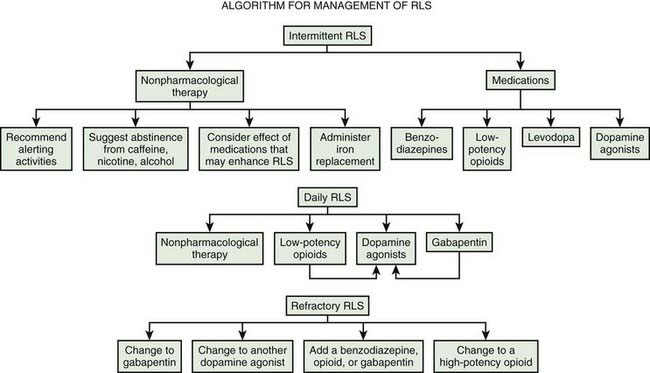 This is a state of the nervous system, which can sometimes greatly affect the quality of life, adding to a person not only physical, but also psychological problems.
This is a state of the nervous system, which can sometimes greatly affect the quality of life, adding to a person not only physical, but also psychological problems.
As a rule, RLS occurs at the age of 30 years and older, each case should be taken into account in itself, since its progression can cause serious disturbances in both sleep and psycho-emotional balance, which makes life difficult, not least.
Causes of Restless Leg Syndrome
Restless Leg Syndrome is a disorder in which a person feels unpleasant tingling, burning, numbness or other unusual sensations in the lower extremities during rest or sitting. However, the causes of this syndrome can be different:
- Neurological problems: Neuralgia, polyneuropathy, Parkinson’s disease and other diseases associated with impaired functioning of the nervous system can cause restless legs syndrome.
- Iron deficiency anemia: iron deficiency in the body can cause restless legs syndrome, which is associated with impaired signaling in the brain.

- Drug effects: Some drugs, such as antidepressants, antihistamines, and others, may cause symptoms of restless leg syndrome.
- Hormonal changes: Restless legs syndrome can occur in women during pregnancy or menopause associated with hormonal changes in the body.
In general, the causes of restless leg syndrome can be numerous and depend on the individual situation. Therefore, it is important to consult a specialist for the correct diagnosis and treatment of this disorder.
Restless Leg Syndrome Symptoms
Restless Leg Syndrome is an unpleasant feeling that occurs in the lower extremities, sometimes even at rest. It can be described as burning, numbness, tingling or trembling. All this leads to the need to constantly move the legs in order to get rid of these sensations.
Sensations usually begin during rest in the evening or at night, when the person should be calm and relaxed. In some cases, restless legs syndrome can be accompanied by pain or even muscle cramps.
In some cases, restless legs syndrome can be accompanied by pain or even muscle cramps.
Feelings of anxiety may last from several minutes to several hours, and their frequency and intensity may increase.
- discomfort in the legs;
- burning, numbness, tingling or trembling;
- the need to constantly move the legs;
- worse at night or at rest;
- possible accompaniment of pain and muscle cramps;
- aggravated by drinking alcohol, taking certain drugs or lack of sleep;
- possible association with depression and anxiety;
- repetitive character, duration from several minutes to several hours.
Diagnosis of restless legs syndrome
History
When diagnosing restless legs syndrome, it is important to conduct a detailed analysis of the patient’s history. The doctor needs to find out when the first manifestation of the syndrome appeared, which relative has the same symptoms, what drugs the patient is taking, whether there is a combination with other diseases, etc.
General clinical examination
During the general clinical examination, the doctor examines the condition of the skin and veins on the legs, checks muscle tone and reflexes, examines nerve curls and other neurological examinations.
Additional diagnostic methods
For a more accurate diagnosis of restless legs syndrome, a number of additional methods are used: electromyography (EMG), computed tomography (CT), magnetic resonance imaging (MRI), vascular ultrasound, and others.
How to treat restless leg syndrome?
Restless legs syndrome is an unpleasant disease that greatly interferes with sleep and increases anxiety levels. The choice of treatments for the syndrome depends on the severity of the symptoms and their causes.
In some cases, psychotherapy or massage may help, especially if the symptoms are caused by an overactive nervous system. Also, an active lifestyle can bring relief, which will help remove excess stress on the nervous system.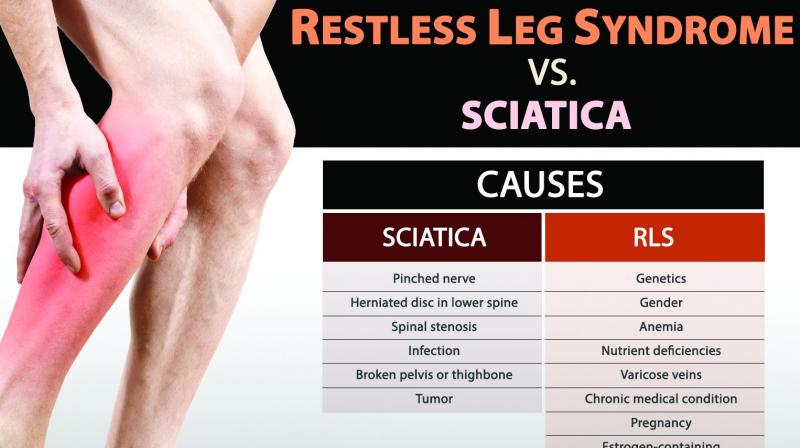
Treating restless leg syndrome is a long process that requires patience and perseverance. In any case, do not delay contacting a specialist who will help determine the true causes of this disease.
Drug treatment of restless legs syndrome
Restless legs syndrome is an unpleasant condition that leads to constant restlessness and lack of sleep. However, there are many medications available to help control symptoms.
For mild forms of the syndrome, the doctor may prescribe iron supplements to help replenish iron deficiency in the body. Also, the use of magnesium can have a positive effect on reducing discomfort.
Additionally, drugs that modify the brain’s dopaminergic system, such as levodopa, may be used. These drugs, which increase the action of dopamine in neural circuits, can improve the functioning of the nervous system and reduce the symptoms of the syndrome.
While medication can provide significant relief from restless leg syndrome, your doctor may also recommend lifestyle changes. Regular exercise, proper nutrition, avoiding various bad habits, reducing caffeine and alcohol intake, and not getting enough sleep at night can worsen the patient’s condition.
Regular exercise, proper nutrition, avoiding various bad habits, reducing caffeine and alcohol intake, and not getting enough sleep at night can worsen the patient’s condition.
Physical Therapy for Restless Legs Syndrome
Restless Legs Syndrome (RLS) can lead to a decrease in the patient’s quality of life, therefore it is important to apply an effective method of treatment. Physical therapy is one of the alternative therapies that can help relieve the symptoms of RLS.
One of the most common methods of physiotherapy is electrical stimulation of the legs. It is a treatment method that many patients prefer due to its painlessness. During the procedure, electrical impulses are sent through the skin and muscles of the legs, which reduces the feeling of pain and discomfort.
However, physiotherapy is not limited to electrical stimulation of the legs. Massage, pneumotherapy, and leg exercises can also help reduce symptoms of RLS. Foot massage can improve blood flow and muscle tone, and stretching exercises can help reduce symptoms of RLS.
Pneumotherapy or compression therapy can also help patients with RLS. This treatment method involves the use of special socks or gaiters that help improve blood flow and reduce swelling in the legs. Thus, patients can relieve the feeling of heaviness and reduce soreness in the legs.
In general, physical therapy is an effective way to treat RLS. They lead to a reduction in symptoms and an improvement in the patient’s quality of life.
Alternative treatments for restless leg syndrome
Restless legs syndrome is a nervous system disorder that can lead to discomfort in the legs and affect the quality of sleep. Although medications are the most effective treatment for this syndrome, there are several alternative treatments that can also help reduce symptoms.
Foot massage
Foot massage can help relieve muscle tension and relieve restless leg pain. A good option is to use a massage cushion or special rollers, which can help to gently straighten the leg muscles.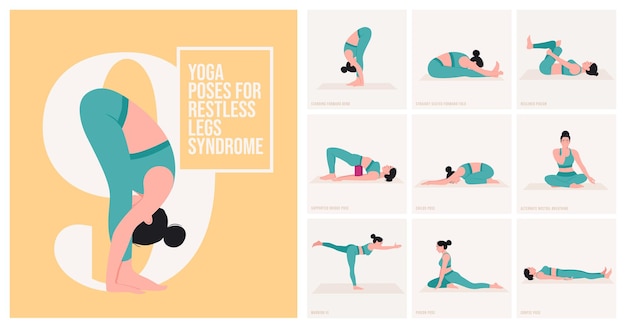 To achieve maximum results, massage your feet every day before going to bed.
To achieve maximum results, massage your feet every day before going to bed.
Active Muscle Expansion
If you suffer from Restless Leg Syndrome, stretching and relieving exercises can help. A good option is yoga, stretching and light exercises for the muscle group of the legs. This will help reduce pain and improve the quality of sleep.
Lifestyle changes
Avoid smoking, reduce your caffeine and alcohol intake, and set regular sleep times. You should also avoid eating foods that contain gluten or lactose. It is important to monitor your health and set the right daily routine. This approach can effectively reduce the symptoms of restless leg syndrome.
- Foot massage helps relieve pain.
- Active muscle expansion through leg exercises and yoga can reduce soreness.
- Avoid smoking, alcohol and caffeine and set regular sleep times.
How to prevent Restless Leg Syndrome?
Good leg health is important not only for the prevention of restless leg syndrome, but also for overall health. The following recommendations may help maintain healthy feet:
The following recommendations may help maintain healthy feet:
- Active lifestyle. Regular exercise can help improve circulation and strengthen muscle tissue, which can reduce the risk of restless leg syndrome.
- Avoid using nicotine and alcohol. Nicotine and alcohol can impair circulation and contribute to restless leg syndrome.
- Watch your weight. Being overweight can put more stress on your legs, which can lead to poor circulation and restless leg syndrome.
- Avoid prolonged sitting or standing in one position. Taking regular breaks to stretch and warm up can help improve circulation and prevent restless leg syndrome.
- Relax your feet. Relaxing leg treatments, such as massages and hot baths, can help reduce leg tension and prevent restless leg syndrome.
When should I see a doctor for restless leg syndrome?
1. If your symptoms worsen:
If you notice that your symptoms are getting worse and are interfering with your sleep and daily life, you should contact your doctor. Symptoms may appear more frequently, stronger, and longer. Immediate consultation with a specialist will help prevent complications and improve quality of life.
Symptoms may appear more frequently, stronger, and longer. Immediate consultation with a specialist will help prevent complications and improve quality of life.
2. If you have other medical conditions:
Restless legs syndrome can be associated with various medical conditions such as diabetes, arthritis, nerve damage, etc. In the presence of pre-existing diseases, it is necessary to consult a doctor to clarify the diagnosis and prescribe appropriate methods of treatment.
3. If you are pregnant:
Many women experience restless leg syndrome during pregnancy. During this period, you need special care, and the doctor will be able to provide effective treatment measures to improve your health and the health of the child.
4. If you have complaints of pain in your legs:
Restless leg syndrome sufferers often experience discomfort in their legs, such as burning, numbness and pain. If these symptoms do not go away or get worse, see your doctor to identify and eliminate their causes.
Seeing a doctor for restless leg syndrome is an important step towards successful treatment. Don’t put off going to a specialist if you experience these symptoms!
Restless Legs Syndrome Summary
Restless Legs Syndrome , also known as RLS (Restless Legs Syndrome), is a serious condition that can have a negative impact on a patient’s quality of life.
Although the causes of RLS are not fully understood , there are many factors that can aggravate its manifestations. These include the presence of diabetes mellitus, impaired kidney function, anemia and some other diseases.
Treatment for RLS may include a combination of drug and non-drug therapy . Depending on the severity of the symptoms and the causes of the disease, patients may be prescribed medication to reduce symptoms of discomfort and pain, lifestyle changes, and dietary adjustments.
- Non-pharmacological treatments for RLS help to alleviate the symptoms of the syndrome and improve the patient’s sleep.
 Techniques such as chiropractic, exercise, avoiding alcohol and caffeinated beverages, and improving sleep patterns can help.
Techniques such as chiropractic, exercise, avoiding alcohol and caffeinated beverages, and improving sleep patterns can help. - Drug treatments for RLS include drugs that help reduce nervous system activity and help relax muscles. These include treatment of iron deficiency anemia, the use of drugs for hypertension, as well as antidepressants and benzodiazepines.
Restless Leg Syndrome Conclusions: Although the causes of the disease are not fully understood, it is clear that RLS requires a combination of drug and non-drug treatments. The symptoms of RLS impair the quality of life of patients, so it is important to see a doctor at the first sign of the disease in order to receive qualified assistance and proper treatment.
Related videos:
Q&A:
What is Restless Leg Syndrome?
Restless legs syndrome is a disorder that results in the feeling of an overwhelming desire to move the legs at rest due to unpleasant sensations such as burning, numbness, tingling and discomfort.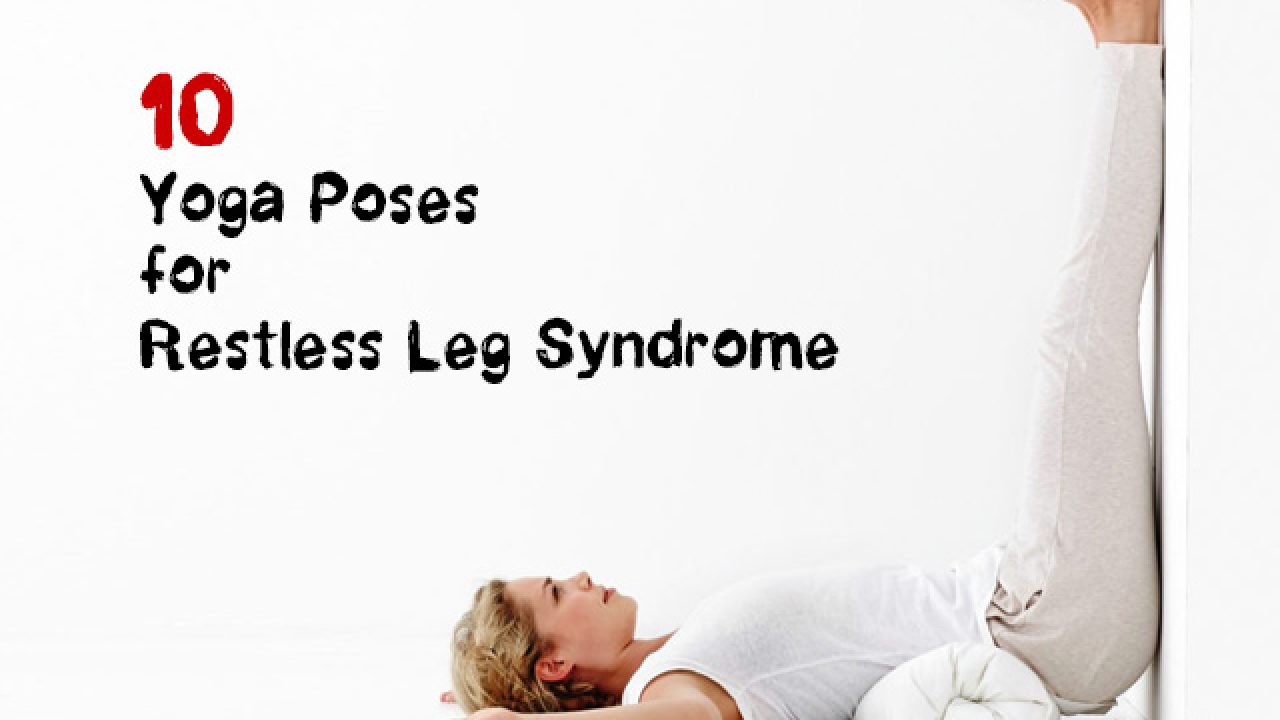
What are the main causes of restless leg syndrome?
The main causes of restless legs syndrome can be related to nervous system disorders, heredity, brain abnormalities, chemical imbalances in the body, and certain medical conditions such as pregnancy, diabetes, and anemia.
What are the treatments for restless leg syndrome?
Treatment for restless leg syndrome may include lifestyle changes, medications, massage, acupuncture, cold protection, and stretching exercises.
What drugs are used to treat restless leg syndrome?
Drugs that are used to treat restless leg syndrome may include dopaminergic agents, benzodiazepines, antiepileptics, iron, and antidepressants.
Can restless leg syndrome be treated without drugs?
Yes, lifestyle changes can help manage restless leg syndrome. This may include stretching exercises, regular therapeutic massages, eating foods rich in iron and magnesium, and reducing your intake of caffeine, alcohol, and nicotine.
Is restless legs syndrome hereditary?
Yes, restless leg syndrome can be inherited. However, heredity is not the only cause of this disorder, and many people who do not have hereditary factors may also experience this disorder.
Restless legs syndrome
- Main
- Restless legs syndrome
Restless legs syndrome (RLS) is a neurological disease manifested by paresthesias in the lower extremities and their excessive motor activity, mainly at rest or during sleep .
Restless legs syndrome was first described by Thomas Willis in 1672: “In some people, when they are going to sleep and lie down in bed, immediately after this there is a movement of the tendons, arms and legs, accompanied by colic and such restlessness that the patient cannot sleep like he’s under torture.” The modern definition of this syndrome was proposed by the Swedish scientist K. Ekbom in 1945:
Restless legs syndrome can be primary (idiopathic) and secondary.
One of the most likely causes of the development of primary restless legs syndrome is considered to be the insufficiency of dopaminergic systems in the subcortical structures of the brain involved in inhibitory processes.
Secondary restless legs syndrome can develop during pregnancy and various pathological conditions.
The main causes of secondary restless leg syndrome are:
- Iron deficiency. Iron deficiency disrupts the production of dopamine in the brain, which in turn provokes the development of secondary RLS. A patient’s iron stores may be depleted even without clinically significant anemia. Studies have shown that a decrease in iron stores, defined as a decrease in ferritin levels below 50 µg/L, can cause or exacerbate the symptoms of RLS.
- Neurological disorders. Secondary RLS is often observed in injuries of the spinal cord and peripheral nervous system, as well as peripheral neuropathies of various origins (diabetic, alcoholic, toxic).

- Pregnancy. RLS occurs in 15-20% of women during pregnancy. Symptoms can be quite severe, but usually disappear completely within a few weeks after delivery. Iron deficiency anemia, folic acid deficiency, hormonal changes, and venous congestion in the lower extremities are thought to be the causes of RLS during pregnancy.
- Uremia. Up to 50% of patients with ESRD have RLS. The frequency of RLS was shown to correlate with blood urea levels, anemia, peripheral neuropathy, and a decrease in parathyroid hormone levels in this category of patients. Especially severe symptoms are noted directly during dialysis, when the patient is forced to lie motionless for several hours. Reduction or disappearance of RLS symptoms has been shown after kidney transplantation.
- Use of medicines. Symptoms of RLS may develop or worsen with the use of various medications, such as tricyclic antidepressants (amitriptyline, azafen, etc.), selective serotonin reuptake inhibitors (trazodone, Prozac), lithium preparations, metoclopramide (raglan), calcium channel blockers (corinfar, finoptin).
 Caffeine also worsens the symptoms of RLS.
Caffeine also worsens the symptoms of RLS.
Clinical manifestations of RLS can be grouped into several main symptom complexes:
Discomfort in the legs. They are usually described as crawling, trembling, tingling, burning, twitching, electric current, wiggling under the skin, etc. About 30% of patients characterize these sensations as pain. Sometimes patients cannot accurately describe the nature of the sensations, but they are always extremely unpleasant. These sensations are localized in the thighs, shins, feet and undulate every 5-30 seconds. There are significant fluctuations in the severity of these symptoms. In some patients, symptoms may occur only at the beginning of the night, in others – continuously disturb throughout the day.
Symptoms worse at rest. The most characteristic and unusual manifestation of RLS is an increase in sensory or motor symptoms at rest. Patients usually report worsening while sitting or lying down and especially when falling asleep. Usually, before the onset of symptoms, it takes from several minutes to an hour when you are in a calm state.
Usually, before the onset of symptoms, it takes from several minutes to an hour when you are in a calm state.
Symptoms are relieved by movement. Symptoms are greatly relieved or disappear on movement. The best effect most often has a simple walk. In some cases, stretching, bending over, exercising on a stationary bike, or just standing up helps.
Symptoms are circadian. Symptoms are significantly worse in the evening and in the first half of the night (between 6 pm and 4 am). Before dawn, the symptoms weaken and may disappear altogether in the first half of the day.
It should be noted, however, that sometimes diagnostic difficulties may arise in the differential diagnosis of primary and secondary restless leg syndrome. Since there are no exact biochemical markers of primary RLS, it is not possible to say with certainty whether the above condition is the cause that caused secondary RLS, or whether it only provoked the clinical manifestations of primary RLS.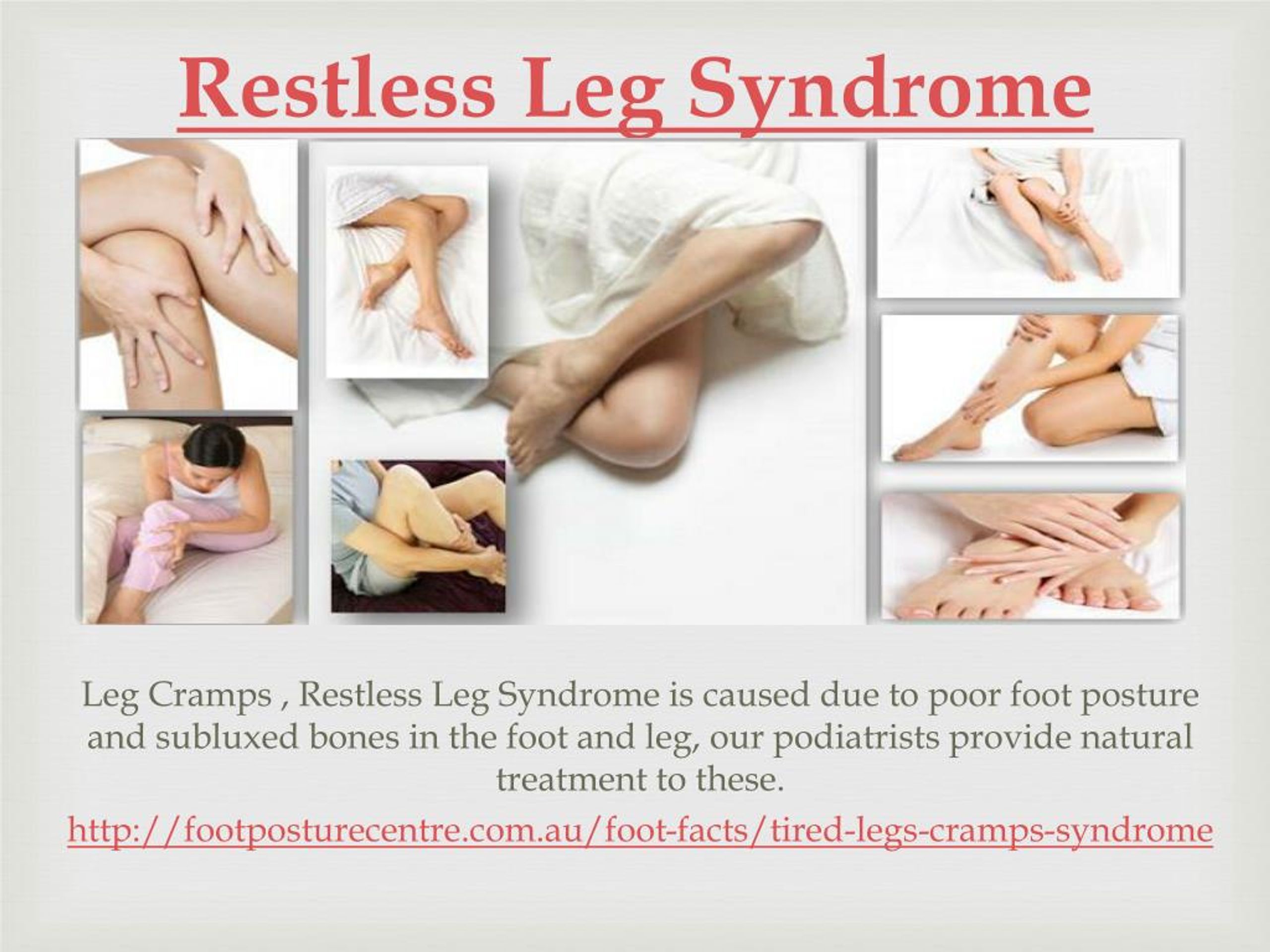

 9 How to prevent restless legs syndrome?
9 How to prevent restless legs syndrome?
 Techniques such as chiropractic, exercise, avoiding alcohol and caffeinated beverages, and improving sleep patterns can help.
Techniques such as chiropractic, exercise, avoiding alcohol and caffeinated beverages, and improving sleep patterns can help.
 Caffeine also worsens the symptoms of RLS.
Caffeine also worsens the symptoms of RLS.